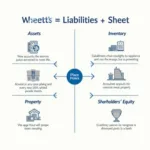Part 1: Incomplete Sentences
-
The company must file its annual tax return by the ___ deadline to avoid penalties.
A. statutory
B. stationary
C. statuary
D. stationery
-
Businesses are required to ___ accurate records of all financial transactions for tax purposes.
A. maintain
B. sustain
C. retain
D. obtain
-
The tax authority may conduct an ___ to verify the accuracy of a company’s tax filings.
A. audit
B. audition
C. audience
D. auditorium
-
Small businesses often struggle to ___ with complex tax regulations without professional assistance.
A. comply
B. complete
C. compile
D. compel
-
Failure to submit tax documents on time may result in substantial ___.
A. fines
B. finds
C. funds
D. founds
-
Companies must ___ their taxable income by subtracting allowable deductions from their gross revenue.
A. calculate
B. calibrate
C. cultivate
D. culminate
-
The ___ rate for corporate income tax varies depending on the company’s annual earnings.
A. applicable
B. appliance
C. application
D. applaud
-
Businesses should ___ all receipts and invoices as evidence for claimed expenses.
A. preserve
B. persevere
C. perceive
D. permeate
-
Tax laws are subject to frequent changes, requiring companies to stay ___ of new regulations.
A. abreast
B. abroad
C. abridge
D. abrupt
-
Companies operating in multiple jurisdictions must navigate complex ___ tax rules.
A. international
B. interior
C. intermediate
D. intermittent
-
The ___ of taxes owed is based on the company’s net profit for the fiscal year.
A. assessment
B. assortment
C. assignment
D. assumption
-
Businesses can often reduce their tax liability by taking advantage of various ___ and credits.
A. deductions
B. dedications
C. deductions
D. derogations
-
Companies must ___ their tax returns electronically or by mail, depending on their size and preferences.
A. submit
B. submarine
C. submerge
D. sublimate
-
The tax code provides ___ for certain types of business expenses, such as research and development costs.
A. incentives
B. incense
C. incidence
D. incisors
-
Accurate financial statements are ___ for determining a company’s tax obligations.
A. crucial
B. cruel
C. crumble
D. crucible
-
Companies must ___ their tax identification number on all official tax documents.
A. include
B. incline
C. incubate
D. inculcate
-
The tax authority may grant an ___ for filing taxes if a company faces extraordinary circumstances.
A. extension
B. extensive
C. extention
D. extinction
-
Businesses should consult with tax professionals to ensure ___ with all relevant tax laws.
A. compliance
B. compliment
C. complement
D. complaint
-
Companies must report any ___ income, including interest earned on investments.
A. passive
B. passionate
C. passing
D. passage
-
The ___ of tax rates for different income brackets can significantly impact a company’s financial planning.
A. structure
B. stricture
C. striction
D. striation
-
Businesses must ___ their tax payments quarterly or annually, depending on their size and income.
A. remit
B. remote
C. remand
D. remain
-
Companies should maintain a ___ system for organizing tax-related documents.
A. filing
B. filling
C. feeling
D. falling
-
The tax code allows for certain ___ to be carried forward to future tax years.
A. losses
B. loses
C. looses
D. looses
-
Proper tax planning can help businesses ___ their overall tax burden legally.
A. minimize
B. minify
C. miniature
D. minister
-
Companies must ___ any changes in their business structure or ownership to the tax authorities.
A. report
B. retort
C. resort
D. rapture
-
The tax authority may impose ___ on companies that fail to pay their taxes on time.
A. penalties
B. penalities
C. penuries
D. pennies
-
Businesses should ___ all tax-related correspondence from the government promptly.
A. address
B. adress
C. adduce
D. additive
-
Companies must ___ their tax returns for a specified number of years in case of future audits.
A. retain
B. retrain
C. restrain
D. regain
-
The tax code provides ___ rules for depreciating business assets over time.
A. specific
B. specified
C. specious
D. spacious
-
Businesses should stay informed about potential tax ___ that may affect their industry.
A. reforms
B. refers
C. refrains
D. reframes
The company must file its annual tax return by the ___ deadline to avoid penalties.
A. statutory
B. stationary
C. statuary
D. stationery
Businesses are required to ___ accurate records of all financial transactions for tax purposes.
A. maintain
B. sustain
C. retain
D. obtain
The tax authority may conduct an ___ to verify the accuracy of a company’s tax filings.
A. audit
B. audition
C. audience
D. auditorium
Small businesses often struggle to ___ with complex tax regulations without professional assistance.
A. comply
B. complete
C. compile
D. compel
Failure to submit tax documents on time may result in substantial ___.
A. fines
B. finds
C. funds
D. founds
Companies must ___ their taxable income by subtracting allowable deductions from their gross revenue.
A. calculate
B. calibrate
C. cultivate
D. culminate
The ___ rate for corporate income tax varies depending on the company’s annual earnings.
A. applicable
B. appliance
C. application
D. applaud
Businesses should ___ all receipts and invoices as evidence for claimed expenses.
A. preserve
B. persevere
C. perceive
D. permeate
Tax laws are subject to frequent changes, requiring companies to stay ___ of new regulations.
A. abreast
B. abroad
C. abridge
D. abrupt
Companies operating in multiple jurisdictions must navigate complex ___ tax rules.
A. international
B. interior
C. intermediate
D. intermittent
The ___ of taxes owed is based on the company’s net profit for the fiscal year.
A. assessment
B. assortment
C. assignment
D. assumption
Businesses can often reduce their tax liability by taking advantage of various ___ and credits.
A. deductions
B. dedications
C. deductions
D. derogations
Companies must ___ their tax returns electronically or by mail, depending on their size and preferences.
A. submit
B. submarine
C. submerge
D. sublimate
The tax code provides ___ for certain types of business expenses, such as research and development costs.
A. incentives
B. incense
C. incidence
D. incisors
Accurate financial statements are ___ for determining a company’s tax obligations.
A. crucial
B. cruel
C. crumble
D. crucible
Companies must ___ their tax identification number on all official tax documents.
A. include
B. incline
C. incubate
D. inculcate
The tax authority may grant an ___ for filing taxes if a company faces extraordinary circumstances.
A. extension
B. extensive
C. extention
D. extinction
Businesses should consult with tax professionals to ensure ___ with all relevant tax laws.
A. compliance
B. compliment
C. complement
D. complaint
Companies must report any ___ income, including interest earned on investments.
A. passive
B. passionate
C. passing
D. passage
The ___ of tax rates for different income brackets can significantly impact a company’s financial planning.
A. structure
B. stricture
C. striction
D. striation
Businesses must ___ their tax payments quarterly or annually, depending on their size and income.
A. remit
B. remote
C. remand
D. remain
Companies should maintain a ___ system for organizing tax-related documents.
A. filing
B. filling
C. feeling
D. falling
The tax code allows for certain ___ to be carried forward to future tax years.
A. losses
B. loses
C. looses
D. looses
Proper tax planning can help businesses ___ their overall tax burden legally.
A. minimize
B. minify
C. miniature
D. minister
Companies must ___ any changes in their business structure or ownership to the tax authorities.
A. report
B. retort
C. resort
D. rapture
The tax authority may impose ___ on companies that fail to pay their taxes on time.
A. penalties
B. penalities
C. penuries
D. pennies
Businesses should ___ all tax-related correspondence from the government promptly.
A. address
B. adress
C. adduce
D. additive
Companies must ___ their tax returns for a specified number of years in case of future audits.
A. retain
B. retrain
C. restrain
D. regain
The tax code provides ___ rules for depreciating business assets over time.
A. specific
B. specified
C. specious
D. spacious
Businesses should stay informed about potential tax ___ that may affect their industry.
A. reforms
B. refers
C. refrains
D. reframes
![]() TOEIC Reading Practice Test on Business Tax Guidelines
TOEIC Reading Practice Test on Business Tax Guidelines
Part 2: Text Completion
Text 1
The process of (31) annual business taxes can be complex and time-consuming. Companies must first (32) all relevant financial information, including income statements and balance sheets. It’s crucial to (33) accurate records throughout the year to facilitate this process. Once the necessary data is compiled, businesses should review the current tax laws to ensure (34) with all regulations.
-
A. filing
B. fining
C. finding
D. funding -
A. gather
B. garnish
C. garner
D. garble -
A. maintain
B. obtain
C. retain
D. sustain -
A. compliance
B. compliment
C. complement
D. complex
Text 2
Tax deductions play a crucial role in (35) a company’s taxable income. Common deductions include business expenses, depreciation, and employee benefits. However, it’s important to (36) that not all expenses are tax-deductible. Businesses should consult with tax professionals to (37) which deductions they are eligible for and how to properly claim them. Careful planning and documentation can help companies (38) their tax liability while remaining compliant with tax laws.
-
A. reducing
B. producing
C. inducing
D. deducing -
A. note
B. notify
C. notice
D. notate -
A. determine
B. terminate
C. germinate
D. illuminate -
A. minimize
B. maximize
C. memorize
D. mobilize
Text 3
The timing of tax payments is an important consideration for businesses. Many companies are required to make (39) tax payments throughout the year, rather than paying one lump sum annually. These payments are typically based on (40) income and help to ensure a steady flow of revenue for the government. Failure to make these payments on time can result in (41) and interest charges. Companies should carefully (42) their cash flow to meet these obligations while maintaining sufficient working capital.
-
A. estimated
B. estimable
C. estimative
D. esteem -
A. projected
B. projecting
C. projectile
D. projection -
A. penalties
B. penalities
C. penuries
D. pennies -
A. manage
B. maneuver
C. mandate
D. manipulate
Text 4
International businesses face additional complexities when filing taxes. They must navigate the tax laws of multiple countries and consider issues such as (43) pricing and foreign tax credits. It’s essential to understand the tax treaties between countries to avoid (44) taxation. Many multinational companies employ specialized tax professionals or consult with international tax firms to ensure (45) with global tax regulations. Proper planning can help businesses (46) their global tax burden while maintaining good standing with tax authorities in all jurisdictions where they operate.
-
A. transfer
B. transit
C. transient
D. translate -
A. double
B. dual
C. duel
D. duet -
A. compliance
B. compliment
C. complement
D. complete -
A. optimize
B. optimate
C. optime
D. optimum
![]() TOEIC Reading Comprehension on Business Tax Filing
TOEIC Reading Comprehension on Business Tax Filing
Answer Key
Part 1: Incomplete Sentences
- A
- A
- A
- A
- A
- A
- A
- A
- A
- A
- A
- A
- A
- A
- A
- A
- A
- A
- A
- A
- A
- A
- A
- A
- A
- A
- A
- A
- A
- A
Part 2: Text Completion
- A
- A
- A
- A
- A
- A
- A
- A
- A
- A
- A
- A
- A
- A
- A
- A
This TOEIC Reading practice test focuses on understanding guidelines for filing annual business taxes, covering key aspects such as tax deductions, compliance, international tax considerations, and the importance of accurate record-keeping. The test is designed to assess vocabulary and comprehension skills related to business tax concepts, helping test-takers prepare for the actual TOEIC exam while improving their understanding of this important business topic.




